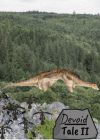
In the immense stretches of outer space, many eons ago, a phenomenal event occurred that surpassed even the most colossal of supernovas. This event wasn't just any ordinary supernova; it was an incredibly massive and impactful event that would leave a near ingrained mark on the history of our world. This phenomenon was referred to as a "super fluctus." It originated from a star of unimaginable size, a staggering 1,536,749,426 times larger than our own sun and located an unbelievable coincidencial distance of 1,536,749,426 light years away.
This colossal celestial body underwent a transformative process due to immense forces of gravity no longer able to sustain nuclear fusion. It gave rise to elements previously unknown to us. As the star collapsed upon itself, its subatomic particles—protons, neutrons, and electrons—were forced together, forming a singularity and birthing a neutron star, a cosmic giant of incredible density and power.
The effects of this cosmic event rippled throughout the universe, carrying with them these newly created elements. Among them was an asteroid formed from one of these elements, which, through a series of fortuitous events, grew and merged into a planet roughly the size of Mars. This planet, known as Theia, would soon collide with Earth, forever changing its fate.
With a thunderous crash, Theia collided with Earth in a cataclysmic event that shattered the planet, reducing it to cosmic debris. The remnants of this collision, drawn in by Earth's gravitational pull, formed the rings that encircle our planet. From this cosmic debris emerged our loyal companion, the moon, born from the remnants of Theia's collision and destined to orbit our planet eternally.
Yet, within Theia lay a treasure trove of elements that bestowed upon Earth the gift of life. But just as they gifted Earth life, Earth gifted it the perfect world. For the planet would be bombardment by meteors delivered water, vital for the emergence of life. For the planet would be positioned at just the right distance from its star, Earth enjoyed ideal conditions for life to thrive, a delicate balance of warmth and distance that allowed sentient beings to evolve.
Sentience, the characteristic of higher intelligence, arises from a combination of physical attributes and willpower. While the body encompasses physical abilities and instincts, the will governs cognition, reasoning, and manipulation. The power of sentience can be quantified using an equation, where bodily attributes and willpower are represented by variables, with the brain serving as a constant factor.
However, the early life forms on Earth during its formative years remained unaware of their potential.
Single Celled Organism: (0.1 + 1/-100)^-100 ≃ 0
Trilobites: (5 + 1/-50)^-50 ≃ 0
Placoderms: (35 + 1/-50)^-50 ≃ 0
Ichthyostega: (15 + 1/-40)^-40 ≃ 0
From the beginnings of single-celled organisms to the emergence of beings like Trilobites, Placoderms, and Ichthyostega, none could unlock the power of sentience throughout the Paleozoic era.
But as Earth transitioned into the Mesozoic era, known as the age of dinosaurs, significant changes occurred. Amphibians evolved into reptiles and therapsids during the Triassic period, laying the groundwork for the emergence of dinosaurs and mammals.
Myosaurus: (15 + 1/-40)^-40 ≃ 0
Chindesaurus: (45 + 1/-30)^-30 ≃ 0
Ornithoscelida: (35 + 1/-30)^-30 ≃ 0
Despite their imposing size, dinosaurs remained devoid of sentience, governed solely by instinct. However, during the Jurassic Period, a creature finally achieved sentience.
Ornithichnites: (5 + 1/5)^5 ≃ 2.48832


